We headed up to Tokyo for three days. We opted for the less expensive overnight bus method instead of the bullet train for this trip. We left our apartment at 8pm Friday night, took the train to Osaka, and managed to make it to the bus stop with only a few wrong turns. The bus ride is about 10 hours. The seats recline and they have privacy hoods you can put over your head to block out light, although the overhead lights are turned off once the bus starts moving. I suspect they're there because, even though your seat is reclined, you're still sleeping sitting up and your mouth will eventually hang open and, in a culture where women wear 4in heels and pearls to go grocery shopping, drooling on yourself while your mouth is gapping open is probably something they want to keep hidden. At about 3am Craig woke up and pushed his back because his not-yet-morning-breath was starting to poison him. He was not alone.
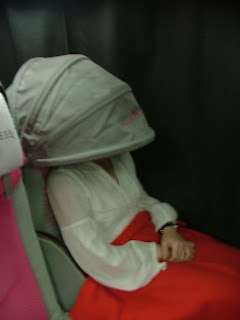
We got to Tokyo at about 8:30am Saturday morning. Our hotel was only a 20min walk from the bus stop but, in our usual fashion, we got a bit lost and it took about an hour to find it. We couldn't check in yet but they did take our luggage and we headed out on our Tokyo adventure.
There are certain things that I've realized I took for granted in the states. Napkins and garbage cans top the list. It is very unusual for restaurants to give you paper napkins; fancier places will give you a damp washcloth to wipe your hands when you first sit down but I wouldn't feel comfortable wiping my mouth or blowing my noise with it. Garbage cans on the streets are even more rare. There is NO litter which amazes me because we usually have to carry empty water bottles or gum wrappers for half the day before we see a garbage. They're often in train stations, but even then, there might be only one and if you aren't walking in that direction you won't find it. The third thing is restaurants that specialize in breakfast. Our hotel did not provide a continental breakfast and restaurants don't usually open until 11am or later (even fast food places because we looked), so each day we had to go to a convenience store and buy some juice and individually wrapped pasteries because that's what was there and stand on the sidewalk and eat our breakfast. Remember, we were in Tokyo, not some little village out in the sticks, and we still couldn't find a place open early enough to feed us, except the hotel restaurant which was crazy expensive and we never even considered.

After our sidewalk breakfast we made our way to Yoyogi park. It is a big park in the middle of Tokyo. It was amazing because you turn off the side walk and suddenly you're in this quite, cool, peaceful, uncrowded place.
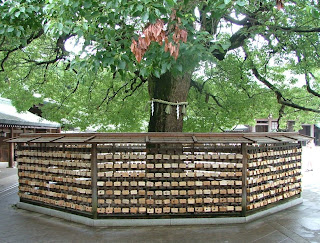
We checked out a big shrine. I believe people wrote out their wishes on the pieces of wood and then hung them on this thing surrounding the tree.

I don't know if the place was under renovation but lots of exterior walls were covered in tarps that were painted to match the decor of the place.



We also walked through a garden that was created in the 1800's for the then Empress. Apparently in June there are crazy amounts of irises blooming. This spring had a guard standing next to it. He said that everyday 1000 people visit it to dip their hands in for good luck. He's there to keep the line orderly and not let people drink from it.
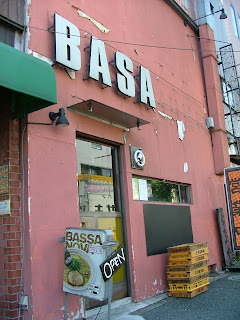
I read about ramen in Tokyo and we set out to find an especially well written about restaurant for lunch. Now when I say ramen you're probably thinking about the little packs of noodles that you can buy 5 for a dollar. Well, in Japan ramen is a much more serious business. According to the article people will wait two hours to get a bowl if it is good. Often restaurants make the noodles fresh and the broth is different from place to place. Basanova was mentioned for its Asian fusion style menu, I got the Thai green curry noodles and they were delicious. The ramen restaurants are not fancy or expensive either.
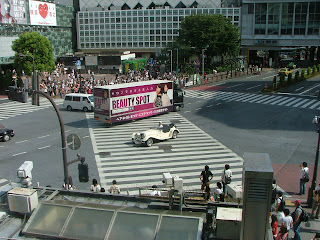

While walking around we came across an intersection I had also read about. There are five streets that come together and when it is time to let pedestrians cross the street traffic is stopped in all directions and it is just a free-for-all.

The proper way to eat ramen is to slurp. We could hear the people around us eating. This place provided us with bibs which I took advantage of. Craig did not at first but he's also not very good at the slurping and opted for the bib after getting broth splatter on himself.
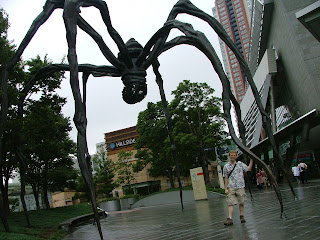

On Sunday morning we went to Roppongi to see Maman, a giant spider sculpture by Louise Bourgeois. Once again, something I found out about from the interwebs. Some other tourists saw my fear pose and totally copied it once it was their turn to take pictures.

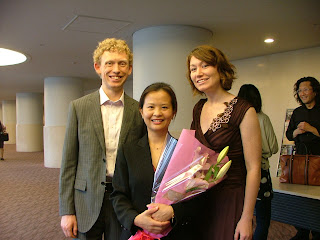
After that we headed back to the hotel to get all prettied up for Hsiao-Lan's concert. This is why we decided to go to Tokyo this weekend. She is a friend from Montana who composed the original music for my thesis film. One of her pieces made it into the Asian Music Festival and the festival flew her to Japan to conduct the Tokyo Symphony Orchestra in the playing of her piece. You might remember my traumatic shopping experience a while ago and my decision to wear a dress I had from my cousin Jilly's wedding, well it was all for naught. We were totally over dressed. We were really shocked to see people in jeans. We think it was because it was a festival and perhaps fellow musicians who were attending the whole two day event didn't see the need to get dressed up. No matter, I'd rather be over-dressed then under dressed. Her concert section had five pieces all conducted by the composers. Her's was the third piece to be performed. The music was east Asian inspired but written for a western orchestra. Afterwards we headed back to the hotel to get unprettied before heading to dinner with her and some other conductors.


Outside the train station in the area, Ikebukuro, where we were staying there were owl topiaries, children's drawings of owls as public art, and a local bakery had cakes decorated with owls. Once we got home and turned to the internet we discovered that the Japanese word for owl is similar to bukuro so owls are like the mascot for the area.
The next day we went to Asakusa, the oldest part of Tokyo. We visited a temple that has one of Budda's bones enshrined at the top of a five story pagoda. There were a lot of people. Many were praying but it was also the most tourist-y place we'd been to.
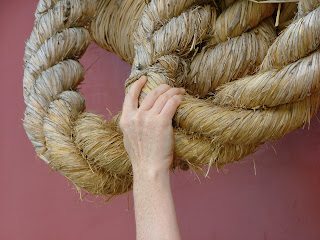
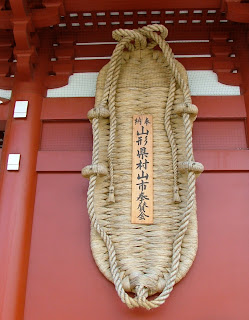
This giant straw sandal is a charm against evil and touching it is like making a wish to be a "goodwalker." I don't think in athletic terms but in terms of walking around and being good.

I totally thought this dragon was wearing glasses until I looked more carefully and realized they're his whiskers.

This statue is outside of a restaurant that lets you grill your own beef. In the background you can see the fire and raw, presumably, beef. What I find troubling is the inclusion of the dog.
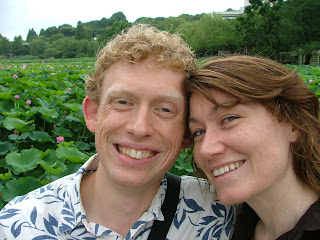

Next we went to another giant park, Ueno Koen. There were tons of shrines, a lake that was so covered in water lilies that from a distance you couldn't actually tell it was a lake. It is the background for the self portrait above the face of Budda. The first Budda statue was about 10 feet tall and was destroyed in the 1600s in an earthquake. The replacement Budda was made afterwards. The face fell off the statue during an earthquake in 1923. The rest of the statue was seized by the government to be used to make weapons during WWII.
This is an "unboxing" video we made for a traditional Tokyo treat. Unboxing videos are popular on youtube, people film themselves opening up their latest gadgets. One of my professors at MSU has started making unboxing videos of food he buys and that's what inspired us.
On Monday night, after all the excitement, I got cleaned up, and Craig and I headed back to the bus stop. This time, thanks to good instructions provided by the really, really helpful information desk at the hotel, it only took us 20min. I boarded the bus at about 10pm and headed back to Kobe. Craig spent the night and then headed out on his own adventure. I didn't join him because I wanted to get back to my Japanese class. He hiked Mt Fuji with a couple of guys we've met at church. We will do it together next summer. The mountain is only open in July and August. He has promised to post on his adventure, so stay tuned.










































